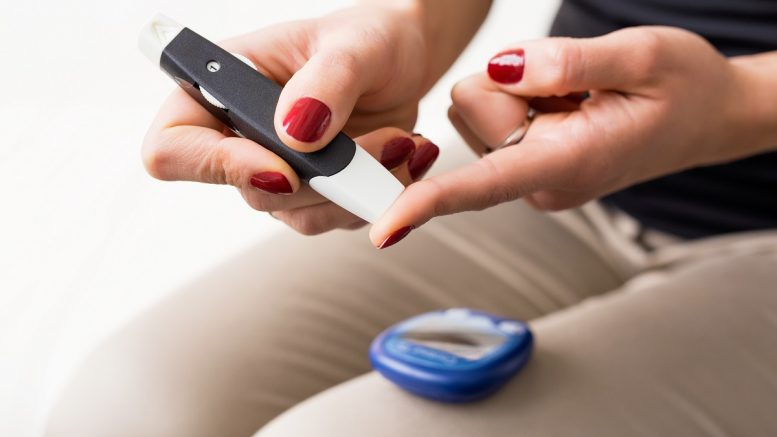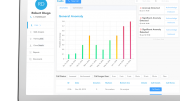Diabetes is one of the top 10 causes of death globally, and the number of people living with the disease rises significantly each year. According to the World Health Organization, between 1980 and 2014, the number of people diagnosed with diabetes rose from 108 million, to 422 million, and diagnoses rates have continued to rise in subsequent years. In 2019, diabetes, and its related conditions, was the ninth leading cause of death worldwide, with an estimated 1.5 million deaths being directly caused by the disease.
In addition to the impact on individual lives, the increasing prevalence of diabetes has a substantial cost to the NHS. Global diabetes community, Diabetes.co.uk revealed that in the UK alone, diabetes costs the NHS over £25,000 every minute, equivalent to £1.5 million an hour, or £14 billion per year. Roughly 10% of the annual overall NHS budget for England and Wales is spent on diabetes related matters, with 80% of these costs going towards the treatment of diabetes complications.
At Health Tech Enterprise’s recent Future of Diabetes Care seminar, clinicians, patient representatives and leading industry figures in diabetes care came together to discuss the key challenges faced by both sides; particularly the increase in premature mortality, and how diabetes innovations can be used to tackle these challenges. The increasing rates of diagnoses, and subsequent complications, are indicative of a need to tackle the issue, and with a collaborative effort from clinicians, healthcare providers and patients, innovators can facilitate advancements in the treatment of complications, improve the patient experience and reduce premature mortality rates as well as deliver cost savings for healthcare systems.
Studies suggest that lifestyle changes, such as improving diet and taking part in regular physical exercise, can decrease the likelihood of developing complications for those with type 2 diabetes, or even reverse the disease, and innovations as simple as the NHS Weight Loss Plan app and the Couch to 5K app can help patients to make these improvements. However, despite a greater overall understanding of preventative measures, complications and premature mortality rates in diabetic patients continue to rise. Acute complications, such as hypoglycaemic and hyperglycaemia, continue to pose a challenge for those living with diabetes and a widely adopted example of a life improving technological solution in diabetes care is the Continuous Glucose Monitoring (CGM) system. CGM’s have removed the need for patients to conduct finger-tip prick blood tests; greatly reducing the risk of the inevitable loss of sensitivity in fingers that has traditionally discouraged regular monitoring. Through integration with their mobile devices, patients with a CGM are now notified when their glucose levels reach certain thresholds, which greatly reduces the likelihood of hypoglycaemic and hyperglycaemia attacks.
The next step is to facilitate a direct connection between CGM’s and insulin pumps, creating a closed-loop system that eradicates the need for patients to self-monitor their insulin levels or administer their own treatment. In the UK, this technology is currently in clinical trials. Sometimes described as an artificial pancreas, these innovations are seen by some as the ‘holy grail’ of diabetes care. These are devices that automatically adjust insulin delivery based on blood glucose levels. They have the potential to revolutionize diabetes care by providing people with diabetes with the ability to achieve near-normal blood sugar levels.
Closed-loop systems will save lives and save health care providers thousands of hours of time, consequently reducing the cost of treating diabetes, easing the financial strain on the NHS.
While closed-loop systems entering the stage of clinical trial is positive news, there are still a myriad of challenges that patients and clinicians highlighted during the seminar.
From a clinical perspective, one of the key challenges in delivering diabetes care for patients is a lack of interoperability between technologies. Dr Alistair Lumb, Consultant in Diabetes at Oxford University Hospitals, suggests that innovators need to focus on developing technology that integrates with the systems that already exist. During appointments, clinicians currently use multiple interfaces in order to access the data and information they need to assess and treat the patient, which ultimately wastes valuable time, limits the number of patients they can treat and does not provide a full, transparent overview of a patient’s condition.
A recurring topic discussed by patient representatives at our seminar was the eagerness to prevent complications as opposed to treating them. Currently, almost all Type 1 diabetes patients, and 67% of Type 2 diabetes patients, will develop diabetic retinopathy within 20 years of diagnosis. It is the leading cause of blindness in the Western world, but it is preventable if treatment is provided early on. However, current treatments for the condition are prohibitively expensive and highly invasive, with treatment costing on average £7,000 per year, per eye. PolyPhotonix identified the need for improvements in the delivery and affordability of preventative treatment, and it developed the Noctura 400 Sleep, a home-based, non-invasive, monitored treatment, which is a fraction of the cost of current treatments of laser photocoagulation and intravitreal injections. The mask reduces hypoxia in the eye which is present at some level in all diabetics; this innovation is now expected to profoundly change the future management of diabetic eye disease.
Indeed, there are several notable technologies in diabetes which lead to improved outcomes and quality of life. Along with these trends, telemedicine has also become useful in diabetes care. It allows people with diabetes to see a healthcare provider virtually, which can enhance access to care and reduce costs. It can also be used to provide education and support to people with diabetes.
But in addition to the advancements already mentioned, further innovations are being researched and developed to improve diabetes care and prevent complications:
- Gene therapy: This potential treatment involves modifying the genes that contribute to the onset of the disease. While still in its early stages, gene therapy could potentially provide a cure for diabetes in the future.
- Cell-based therapies: These are based on the transplantation of insulin-producing cells into the body. This promising approach could offer diabetes patients a more stable source of insulin.
These represent just a few of the innovative approaches under research or in development. As technology continues to progress, we can expect even more breakthroughs that will enhance the lives of those living with diabetes. It’s crucial to remember, however, that while such innovations will undoubtedly aid diabetes care, patients must also adopt a healthy lifestyle to prevent complications. Resources such as Active Ability offer valuable information on diabetes prevention and management.
Conclusion
There are clear and increasing opportunities for technological innovations to improve the delivery of diabetes patient care, and outcomes, in the diabetes pathway. In order for efficient and adoptable medical technologies to be developed and embraced, it is essential that innovators identify where improvements are needed in the current healthcare system to ensure that a new innovation serves its purpose.
By Joop Tanis, Director of MedTech Consulting, Health Tech Enterprise
At Health Tech Enterprise, our team has more than 18 years of experience in accelerating innovations and ensuring success during your product development journey. To find out more, please visit: https://www.healthtechenterprise.co.uk/





